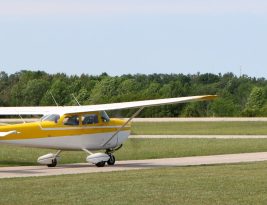Today we’re talking about takeoff distance. The majority of pilot-cause aircraft accidents occur during the takeoff and landing phase of flight. Therefore, a pilot must be familiar with all the variables that can influence aircraft performance during these critical phases. This post is excerpted from the Pilot’s
…Tag: pilot in command
View All CategoriesOnce again, we’re pleased to feature a guest post FAA DPE and CFI Jason Blair. Check out his post from last week on why you should be practicing the glide and his post on flying the traffic pattern from earlier this year. He writes
…In keeping with the theme of gliding, this week I am going to follow-up Jason’s post with a clip from our Virtual Test Prep™ Flight Maneuvers DVD on airborne engine failures. After reading Monday’s post and watching this short clip see if you can
…This week, we’re pleased to feature guest posts from CFI and FAA DPE Jason Blair! We featured Jason’s excellent write up on flying the traffic pattern earlier this year. He writes his own blog at jasonblair.net.
Gliding is for gliders, right? Well, it’s not just for
…In today’s post, we are going to discuss the Airplane Flight Manual (AFM). The AFM is a document that is developed by your airplane’s manufacturer containing specific information in regards to operating instructions of the aircraft. These manuals are specific to an aircraft’s serial number and are approved by the
…The success of a flight depends largely on thorough preparation. In the course of your training, a pattern of regular preflight actions should be developed to ensure that this is the case. This includes planning a flight, and checking
…This week we’re looking again at flight instruments. More specifically, gyroscopic instruments. Take a look at what we’ve posted so far on flight instruments, including our CFI’s series on pitot-static systems. This post is excerpted from Bob Gardner’s The Complete Private Pilot.
The attitude indicator, the
…Let’s recap some of the important information we learned from Monday’s post on carburetor ice.
As air flows through a carburetor, it expands rapidly. At the same time, fuel entering the airstream is vaporized. Expansion of the air and vaporization of the fuel causes a sudden cooling
…

